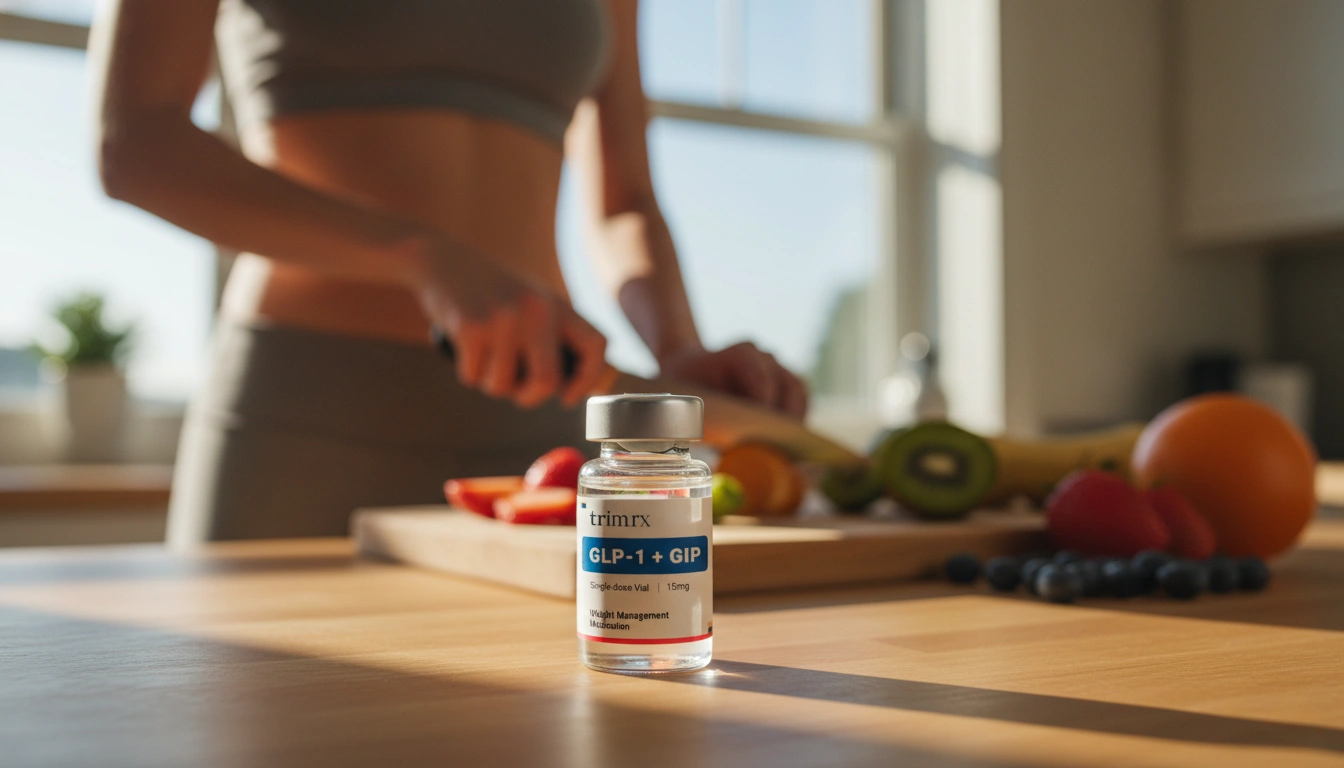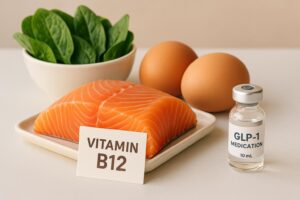How Is GLP-1 Produced? Understanding the Journey of a Key Metabolic Hormone

We often hear about the significant role of glucagon-like peptide-1 (GLP-1) in managing blood sugar levels and weight loss, particularly in the context of type 2 diabetes and obesity treatment. But have you ever wondered how this fascinating hormone is produced in our bodies? The journey of GLP-1 from its inception to its action is a complex process involving multiple organs and intricate cellular mechanisms. In this blog post, we will explore the production of GLP-1, its physiological significance, and how understanding this process can lead to better health outcomes.
Introduction
Did you know that the gut is often referred to as our “second brain”? This is due to the intricate network of hormones, including GLP-1, that help regulate not only our digestion but also our overall metabolic health. GLP-1 is a powerful incretin hormone that plays a vital role in lowering blood sugar levels after meals, promoting insulin secretion, and controlling appetite. Given its importance, understanding how GLP-1 is produced can provide insights into managing conditions like obesity and diabetes.
By the end of this post, you will have a comprehensive understanding of how GLP-1 is produced, the biological processes involved, and the implications for your health. We will delve into the production mechanisms, the cells responsible for its synthesis, and how diet and microbiota influence its levels in the body. Additionally, we will touch upon the advancements in GLP-1-based therapies and how they align with our mission at TrimRx to support personalized weight loss solutions.
The Production of GLP-1: A Journey from Proglucagon to Functional Hormone
What Is GLP-1?
GLP-1, or glucagon-like peptide-1, is a 30-amino acid peptide hormone that is derived from the processing of the proglucagon precursor protein. It is primarily secreted by the intestinal L-cells, particularly in the distal ileum and colon, in response to food intake. Within the body, GLP-1 has various roles, including stimulating insulin secretion, inhibiting glucagon release, slowing gastric emptying, and promoting satiety.
The Proglucagon Precursor
The journey of GLP-1 begins with the proglucagon precursor, which is produced in several locations, including the pancreas, intestine, and brain. Proglucagon is a long peptide that undergoes post-translational processing to yield various active peptides, including GLP-1. The specific enzymes involved in this processing determine which peptides are produced in which tissues.
-
Location of Proglucagon Production:
- Pancreas: In pancreatic alpha-cells, proglucagon is processed into glucagon, glicentin, and other fragments. Here, the enzyme prohormone convertase 2 (PC2) plays a crucial role in this cleavage.
- Intestinal L-cells: In the gut, particularly the L-cells, proglucagon is cleaved by prohormone convertase 1/3 (PC1/3) to produce GLP-1 and GLP-2, which are important for glucose metabolism and gut function.
-
Post-Translational Processing:
The initial product, GLP-1(1-37), is further processed into GLP-1(7-36) amide and GLP-1(7-37). The amidated forms (GLP-1(7-36) amide) are biologically active and are responsible for most of the hormone’s physiological effects.
Secretion of GLP-1
Once produced, GLP-1 is secreted into the bloodstream in response to nutrient intake, particularly carbohydrates and fats. The secretion occurs in a biphasic manner:
- Early Phase: This happens shortly after food ingestion, within 10 to 15 minutes, likely due to neural signaling and the direct contact of nutrients with L-cells.
- Late Phase: A sustained release occurs over a longer duration (30 to 60 minutes) as digestion continues and nutrients are absorbed.
Factors Influencing GLP-1 Secretion
GLP-1 secretion is influenced by various factors, including:
- Nutrient Composition: Different macronutrients affect GLP-1 levels differently. For instance, carbohydrates and fats are more potent stimulators of GLP-1 secretion than proteins.
- Gut Microbiota: The gut microbiome plays a crucial role in regulating GLP-1 secretion. Certain strains of beneficial bacteria can enhance GLP-1 levels, thereby promoting better metabolic health.
- Hormonal Signals: Other hormones, such as glucose-dependent insulinotropic peptide (GIP) and cholecystokinin (CCK), also stimulate GLP-1 secretion.
The Role of GLP-1 in Metabolism
Understanding how GLP-1 is produced is essential for recognizing its physiological role in the body. GLP-1 has several important functions:
- Insulin Secretion: GLP-1 enhances glucose-dependent insulin secretion from pancreatic beta-cells, which helps lower blood glucose levels.
- Glucagon Inhibition: It inhibits the release of glucagon from pancreatic alpha-cells, further contributing to glucose regulation.
- Appetite Control: GLP-1 acts on the central nervous system to promote satiety and reduce food intake, making it a key player in weight management.
- Gastric Emptying: By slowing gastric emptying, GLP-1 helps regulate the rate of glucose absorption into the bloodstream, preventing spikes in blood sugar.
At TrimRx, we understand the importance of GLP-1 in weight management and diabetes control. Our personalized weight loss solutions leverage this knowledge, ensuring that our clients receive the most effective, medically supervised care tailored to their unique needs.
The Future of GLP-1 in Therapy
GLP-1 Receptor Agonists
The development of GLP-1 receptor agonists (GLP-1RAs) has revolutionized the treatment of type 2 diabetes and obesity. Medications such as semaglutide and liraglutide mimic the effects of natural GLP-1, providing significant benefits for blood sugar control and weight loss.
-
Mechanism of Action: GLP-1RAs enhance insulin secretion, suppress glucagon release, and promote weight loss through appetite suppression. These effects make them powerful tools in managing metabolic disorders.
-
Clinical Efficacy: Clinical trials have demonstrated that GLP-1RAs can lead to substantial reductions in HbA1c levels and significant weight loss in patients with type 2 diabetes and obesity.
Personalized Treatment Approaches
At TrimRx, we believe in the power of personalized medicine. By combining our understanding of GLP-1 physiology with innovative telehealth solutions, we provide individualized care that addresses the unique challenges faced by each patient.
-
Personalized Assessment: We offer a free assessment quiz to help determine eligibility for our prescription weight loss medications, ensuring that our clients receive the most appropriate treatment options based on their specific needs. You can take the quiz here.
-
Supportive Supplements: In addition to our prescription medications, we also provide quick-access supplements like GLP-1 Daily Support and Weight Loss Boost, which can enhance the weight loss journey. Check them out here and here.
Conclusion
In summary, the production of GLP-1 involves a complex interplay of cellular mechanisms primarily occurring in the intestine and pancreas. Understanding how GLP-1 is produced and its multifaceted roles in metabolism is crucial for developing effective treatments for obesity and type 2 diabetes.
At TrimRx, we are committed to integrating this knowledge into our personalized weight loss solutions. By leveraging cutting-edge telehealth technology and offering medically supervised care, we aim to make sustainable weight loss attainable for everyone. We encourage you to explore our personalized assessment quiz and quick-access supplements to embark on your own health journey.
FAQ
What is GLP-1?
GLP-1, or glucagon-like peptide-1, is a hormone produced in the intestine that plays a vital role in regulating blood sugar levels, promoting insulin secretion, and controlling appetite.
How is GLP-1 produced?
GLP-1 is produced from the proglucagon precursor through post-translational processing in intestinal L-cells, primarily in response to food intake.
What factors influence GLP-1 secretion?
GLP-1 secretion is influenced by the composition of the diet, the gut microbiota, and various hormonal signals.
What are GLP-1 receptor agonists?
GLP-1 receptor agonists (GLP-1RAs) are medications that mimic the action of GLP-1, enhancing insulin secretion, suppressing glucagon release, and promoting weight loss.
How can I access personalized weight loss solutions?
You can take our free assessment quiz to determine your eligibility for prescription weight loss medications by visiting this link.
Are there supplements available to support my weight loss journey?
Yes, we offer quick-access supplements, including GLP-1 Daily Support and Weight Loss Boost, which can complement your weight loss efforts. Explore them here and here.
By understanding how GLP-1 is produced and its significance, we can better appreciate its role in our health and wellness. Together, we can explore the avenues for achieving better metabolic health and weight management.

Transforming Lives, One Step at a Time
Keep reading
Vitamin B12 and GLP-1 Medications: What to Know
GLP-1 medications can lower B12 absorption and intake; learn symptoms, food sources, supplement options, and how to monitor levels.
Semaglutide Injection Site Reactions: What To Know
Learn why semaglutide injections can cause redness, swelling or nodules, how to prevent and treat them, and when to seek medical care.
TrimRx vs Friday’s
Compare TrimRx and Friday’s telehealth GLP-1 weight-loss programs: pricing, medical support, coaching, delivery, and which fits your needs.



